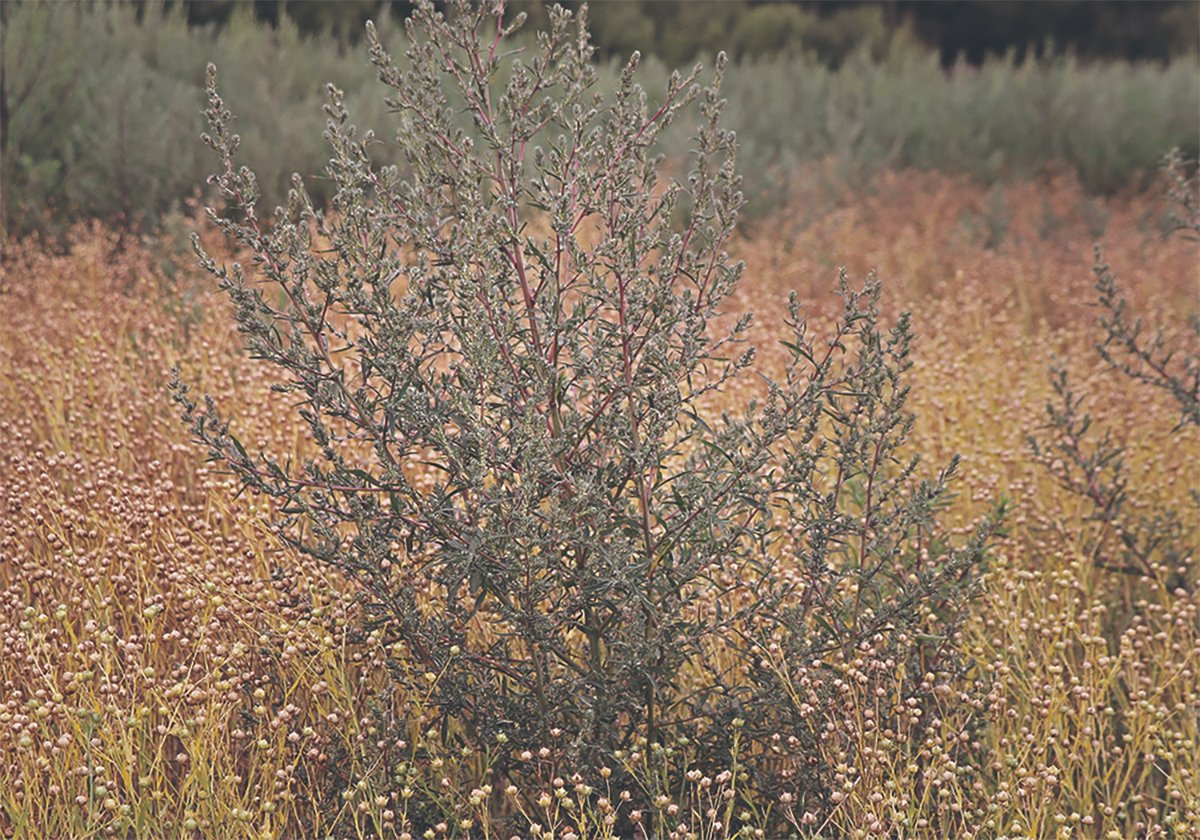Sask. director
To the Editor:
I would like to correct a mistake that Barry Wilson made on his reporting of the Canadian Cattlemen’s Association meetings in Halifax. In his article on page 10 of the Aug. 23 Producer, he stated that the issue of adding the BSE subsidies to the Canadian Agricultural Income Stabilization reference margins “pitted Saskatchewan and Ontario delegates against Alberta,” implying that this Saskatchewan director voted for the motion in question. Over my dead body.
Please correct this, and perhaps in the future Mr. Wilson should get to know the directors and where they come from before he makes such broad statements. The story may not be as good but it at least will be the truth.
Read Also

Kochia has become a significant problem for Prairie farmers
As you travel through southern Saskatchewan and Alberta, particularly in areas challenged by dry growing conditions, the magnitude of the kochia problem is easy to see.
– Mary Jane Saville,
Maple Creek, Sask.
Bison DNA
Re: “Bison swim in diluted gene pool,” WP, Aug. 30.
Not only is the title to the article misleading but the article leaves out pertinent information, giving our customers the impression that bison producers are selling something less than pure bison.
Dr. James Derr of Texas A & M University is making the assertion that most commercial bison carry some cattle DNA and also calls these animals hybrids.
What is a pure bison? Prior to mitochondrial DNA testing, all bison tested pure because, if they were more than 98 percent bison, cattle blood groups could not be detected by blood tests. …
The herds that were tested were U.S. federal herds, so how much cattle blood could be in these animals? The history of the herd that showed six percent with cattle DNA goes back to 1901, after which no cattle genes have been added and the original group was thought to be pure bison.
Dr. Derr acknowledges this and also admits that the animals tested are at least 15 to 20 generations from any cattle cross. Based on these numbers, the animals he is calling hybrid are at least 99.997 percent pure. That is three parts cattle to 99,997 parts bison.
Since mitochondrial DNA can detect these genes forever, how can an animal with three parts cattle DNA or less per 100,000 be a hybrid?
The assertion that most animals in commercial herds contain cattle DNA is absurd. Dr. Derr’s research has been centred on 12 American federal park herds and Elk Island National Park in Canada. Only South Dakota’s Wind Cave National Park and Alberta’s Elk Island National Park herds have tested pure by DNA testing.
We have 250,000 bison in Canada and I know of no private herds that have been tested and in the U.S. only a handful of privately owned animals have been….
The fact is that most private herds have never been tested.
As a bison producer, I take exception to the (headline) “Bison swim in diluted gene pool,” and believe the article is not only a gross exaggeration but casts a negative light on the industry.
Until there has been a lot more testing, it is wrong and inflammatory to postulate that most bison herds are made up of hybrid animals.
– Dick L. Staudinger,
Alix, Alta.
Best interests?
(To Canadian Wheat Board chair Ken) Ritter: I recently opened the CWB calendar and read your letter “A message to the grain farmers of Western Canada.”
It was so full of inaccuracies and arrogance that I felt compelled to respond. You state that you want farmers, not politicians or bureaucrats, to control the CWB. Farmers tried to express their wishes when 62 percent of us voted for choice in the way we wanted to market barley. You totally ignored those wishes of farmers and let a judge who wouldn’t know barley from wheat decide for us.
You and the Friends of the CWB created uncertainty in the barley market. Then you state your motivation was to do what was in the best interests of farmers. How do you know what is in my best interest, Mr. Ritter? You don’t know anything about my farm or my circumstances. The arrogance of that statement is what will be the undoing of the CWB.
You seem to forget that over 75 percent of the production comes from less than 20 percent of the producers. Most of that 20 percent despise the monopoly and everything it stands for. …
Now, with prices setting record highs, we sit here and watch the rest of the world’s farmers being able to access them and all we can do is sit and listen to you tell us you are doing what is best for us.
I’m afraid too many people at the CWB are mistaking arrogance for intelligence and you’re forgetting we, the farmers, know what is best for our individual farms. People that are cowards of change and especially cowards of marketing change should at least have the decency to let people who aren’t afraid of change to move ahead.
The monopoly doesn’t exist because it gains farmers higher prices. It doesn’t exist because the farmers that grow the majority of the wheat and barley want it. It doesn’t exist because it does anything beneficial for farmers in Western Canada.
It exists only because federal judges say it does.
Mr. Ritter, you don’t know what is in the best interest of my farm. I do and will continue to fight until I have the right to sell the fruits of my labours just as every Canadian should.
I hope you and the other pro-monopoly directors will remember that the majority of grain delivered to the CWB is only delivered because it is forced there by judges, not attracted there by the good job you claim you are doing.
– Conrad Johnson,
Bracken, Sask.
Herd mentality
I was trying to analyze why we react the way we do these days mainly to the constant bombardment of propaganda brought to us through the little box in our living rooms.Â
It took me back to my childhood on the farm. One of my chores was to … hunt up the milk cows around 4 p.m. each day. As I travelled over the hill out of the valley, I would eventually spot the cows. …
This is when my faithful farm dog took action. These cows had little respect for a little kid on a pony. A few nips on their heels by Lassie and that all changed. Even after Lassie passed on, the mere mention of her name with “sic ’em” tacked on would pick up the pace of a cow trailing behind….
Now, years later, I travel around Alberta seeing places where the Native Indians would manipulate herds of bison over cliffs to their demise. In observing the bison bulls at a bison ranch at Morin, Alta., it is hard to imagine these majestic beasts could be hoodwinked into going to their deaths by being spooked by a few men strategically positioning themselves. The huge piles of bones below these cliffs testify that it worked very well. Â
We are not bovine creatures and I would like to think we have a far superior intelligence. But are we too being herded? Were events like Pearl Harbor and the planes hitting the twin towers on 9/11 the events needed to get our human herd stampeding?Â
Has fear got us heading hell bent to a precipice with martial law awaiting us below? What does it take to get the brakes applied?
I suggest that fear’s worst enemy is truth. …
There is lots of misinformation out there but if you really want peace of mind, you have to be the one individual to stop and face your bogyman. Like my fictitious cattle dog, you may find out that your bogyman is harmless….
– Clint Hutton,
Hanna, Alta.
Gravy train
After riding the gravy train in Alberta for decades, the international petroleum industry could hardly be expected to jump up and down with joy at the prospect of having to pay higher royalty rates. The reaction of the industry has been typical. Their claim that higher royalties would adversely affect the investment climate in Alberta and result in dire economic consequences is a ploy to influence the provincial government’s reaction to the report of the royalty review panel.
Oil royalties in Alberta have been below global standards for far too long. The recommendations of the royalty review panel … would simply bring Alberta royalties in line with global standards.
Premier Ed Stelmach would be well advised … to take the advice of the panel seriously. In doing so he would be placing the well being of ordinary Albertans ahead of excess profits for the international oil corporations.
– William Dascavich,
Edmonton, Alta.
















